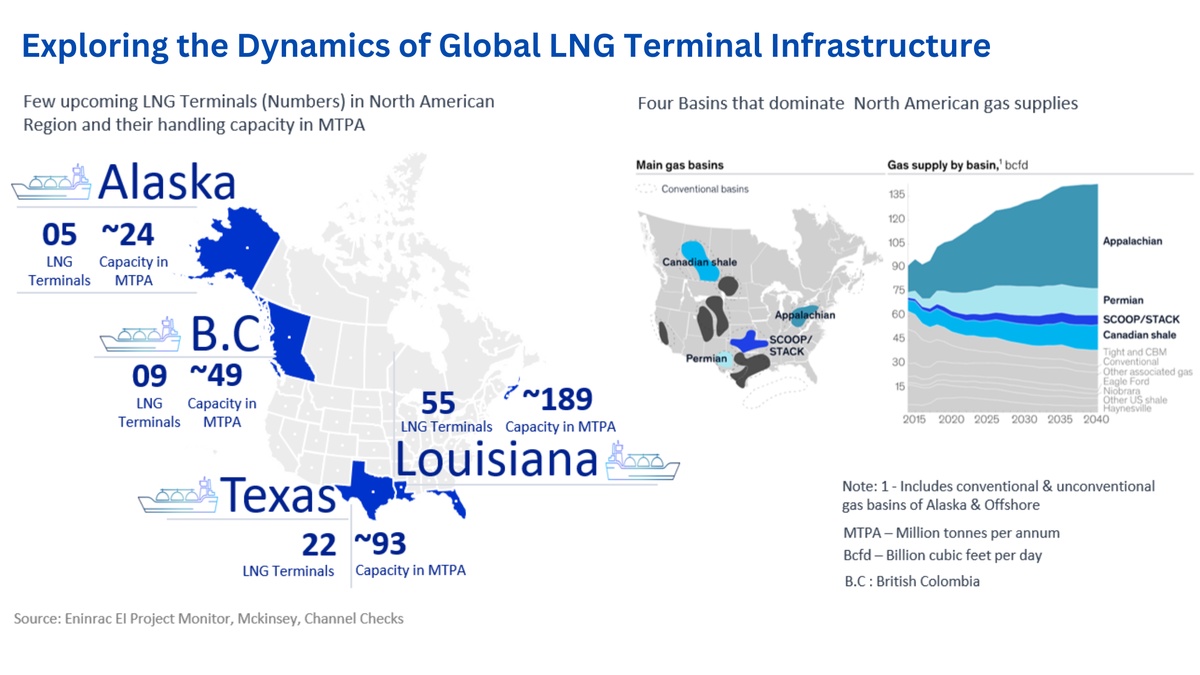Introduction:
In the dynamic landscape of the energy sector, Liquid Natural Gas (LNG) has emerged as a versatile and cleaner alternative, contributing significantly to the diversification of the global energy mix. At the heart of this transformation lies the Global LNG Terminal Infrastructure, a network of facilities crucial for the import, export, storage, and distribution of LNG. This blog delves into the significance, challenges, and future prospects of the global LNG terminal infrastructure, shedding light on its pivotal role in shaping the energy future of nations across the globe.
The Essence of LNG Terminal Infrastructure:
- Global Connectivity: The LNG terminal infrastructure serves as the linchpin connecting energy-producing regions with consumer markets worldwide. It enables the transportation of LNG across vast distances, bridging the gap between surplus and deficit regions and fostering global energy interdependence.
- Versatility and Accessibility: LNG terminals offer a flexible and efficient means of transporting natural gas. LNG, in its liquefied state, occupies significantly less volume than its gaseous form, making it easier to transport and store. This versatility allows nations to tap into diverse energy sources, reducing reliance on conventional fossil fuels.
- Economic Catalyst: The development of LNG terminal infrastructure stimulates economic growth by creating employment opportunities, attracting investments, and enhancing energy security. LNG trade contributes to the global economy, fostering collaborations between nations and promoting a more resilient and interconnected energy market.
Challenges in the Global LNG Terminal Landscape:
- Capital Intensity: Establishing LNG terminals involves substantial capital investments. The high upfront costs associated with infrastructure development, including liquefaction and regasification facilities, can be a barrier, especially for nations with limited financial resources.
- Geopolitical Considerations: LNG terminal projects are often influenced by geopolitical factors, including trade agreements, political stability, and international relations. Geopolitical tensions can impact the development, operation, and maintenance of LNG infrastructure, creating challenges for seamless global energy trade.
- Environmental Concerns: While LNG is considered a cleaner alternative to traditional fossil fuels, the extraction, liquefaction, and regasification processes can have environmental impacts. Addressing concerns related to methane leakage, habitat disruption, and water pollution is crucial for the sustainable growth of the global LNG terminal infrastructure.
- Market Volatility: The LNG market is subject to price fluctuations influenced by factors such as supply-demand dynamics, geopolitical events, and economic conditions. Market volatility poses challenges for long-term planning and investment decisions in the LNG terminal sector.
Future Trajectory of Global LNG Terminal Infrastructure:
- Capacity Expansion: As global demand for LNG continues to rise, an expansion of LNG terminal capacity is inevitable. Key players in the energy sector are investing in the construction of new terminals and the expansion of existing facilities to meet the growing appetite for LNG and ensure a stable energy supply.
- Integration with Renewable Energy: LNG terminals can play a crucial role in integrating renewable energy into the global energy mix. The flexibility of LNG allows it to complement intermittent renewable sources by providing a reliable backup during periods of low renewable energy generation.
- Technological Innovations: Ongoing advancements in LNG technology, including improvements in liquefaction and regasification processes, are enhancing the efficiency and environmental sustainability of LNG terminals. Innovations such as floating storage and regasification units (FSRUs) contribute to the adaptability and scalability of LNG infrastructure.
- Emerging Markets and Global Trade Routes: The development of LNG terminals in emerging markets and the establishment of new global trade routes are reshaping the landscape of LNG trade. Countries are strategically positioning themselves to become LNG hubs, fostering regional and global energy connectivity.
Conclusion:
The Global LNG Terminal Infrastructure stands as a testament to the transformative power of innovation and collaboration in the energy sector. As nations navigate the complexities of energy transition, LNG terminals play a pivotal role in ensuring a reliable, cleaner, and interconnected energy future. The ongoing developments in LNG terminal infrastructure underscore the industry's commitment to sustainability, economic growth, and global energy security, paving the way for a more resilient and dynamic energy landscape.
More market research, advisory consulting services to discover
At Eninrac, we offer a wide range of, advisory consulting solutions, from We put ‘search’ in research to help expand your business with ease. Discover all the possibilities now.


No comments yet